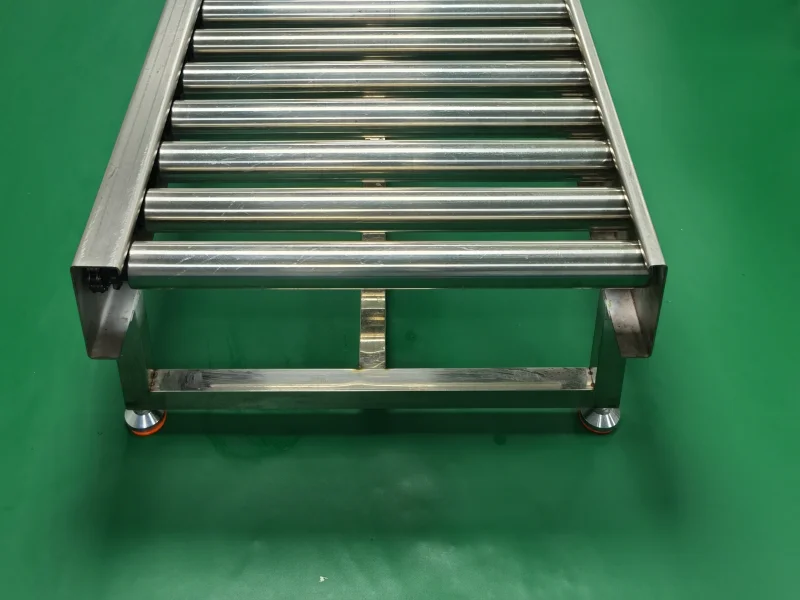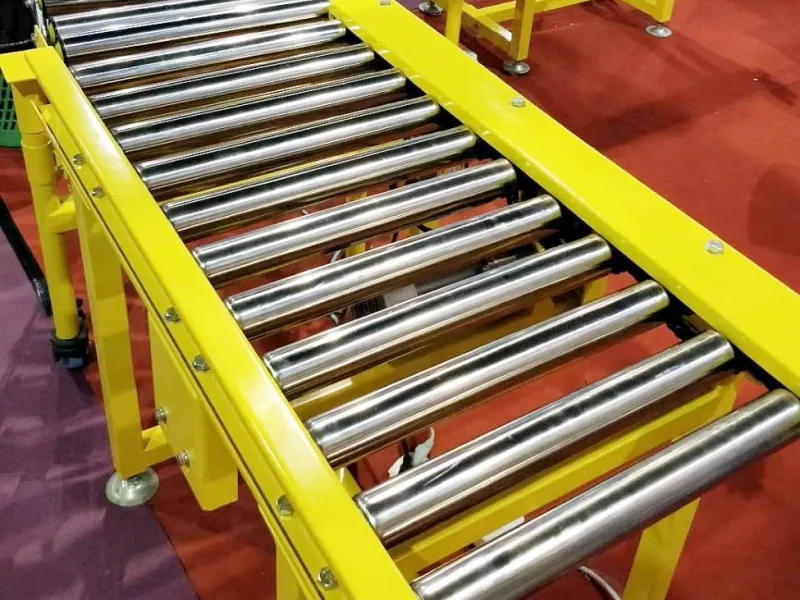
How to Choose a Powered Roller Conveyor?
Choosing a powered roller conveyor involves evaluating your operational needs, material characteristics, facility layout, and budget to ensure efficient, reliable, and controlled material handling. Unlike gravity conveyors, powered roller conveyors use motors to drive the rollers, offering precise speed, direction, and automation capabilities. Below is a step-by-step guide to help you select the right powered roller conveyor for your application.
1. Define Your Application Requirements
- Purpose: Identify the conveyor's role (e.g., transport, accumulation, sorting, incline movement). For example, moving packages across a warehouse vs. staging parts for assembly.
- Load Type: Determine the items to be transported (e.g., boxes, totes, pallets). Powered roller conveyors work best with flat-bottomed, stable items.
- Weight Capacity: Estimate the maximum weight per item or total load (e.g., 50–1,000 lbs+). Ensure the conveyor can handle your heaviest load without strain.
2. Assess Material Characteristics
- Item Size and Shape: Measure the dimensions (length, width, height) of your items. Items must span at least three rollers for stability (e.g., a 12" long item needs rollers spaced 4" apart or less).
- Surface: Check if items are smooth, rough, or fragile. Smooth, stable bases are ideal; irregular or small items may need closer spacing or a belt conveyor.
- Weight Distribution: Ensure loads are evenly distributed to avoid tipping or motor overload.
3. Determine Conveyor Specifications
- Width: Match the conveyor width to your widest item, adding a margin (e.g., 2–4 inches) for stability.
- Light-duty: 12"–24"; heavy-duty: 24"–48" or more.
- Length: Measure the distance items need to travel (e.g., 10–100 feet).
- Modular sections (e.g., 5' or 10' lengths) allow customization.
- Roller Spacing: Set spacing to support items securely (e.g., 2"–6" centers).
- Closer spacing (e.g., 2"–3") for smaller or lighter items; wider (e.g., 4"–6") for larger, stable loads.
- Speed: Choose a speed based on throughput needs (e.g., 30–150 ft/min). Variable speed motors offer flexibility; fixed speeds are simpler.

This is a flat powered roller conveyor system.
4. Select Drive Type and Power
Drive Mechanism
- Line Shaft: A single shaft drives multiple rollers via bands; cost-effective, good for light to medium loads.
- Chain-Driven: Chains connect rollers; durable, ideal for heavier loads or harsh environments.
- Motorized Rollers: Individual rollers with internal motors (e.g., 24V DC); precise, quiet, energy-efficient.
- Belt-Driven: Belts under rollers; smooth, less common but versatile.
- Motor Power: Match to load and speed (e.g., 1/2 HP for light-duty, 1–3 HP for heavier loads). Overpowered motors waste energy; underpowered ones strain the system.
Control Options
- Basic on/off for simple tasks.
- Sensors, PLCs, or variable frequency drives (VFDs) for automation, accumulation, or zoned control.
5. Evaluate Facility Constraints
- Space: Measure available floor space and ceiling height. Account for motor housing, control boxes, and clearance (e.g., 3–5 feet wide for heavy-duty systems).
- Layout: Decide if straight, curved, or inclined sections are needed. Curved sections require tapered rollers; inclines need sufficient motor power.
- Height: Set at an ergonomic level (e.g., 30"–36") or match existing equipment. Adjustable legs offer flexibility.
- Power Supply: Confirm compatibility with your facility's voltage (e.g., 110V, 220V, 480V).
6. Choose Roller and Frame Materials
Rollers
- Steel: Durable, for most loads; galvanized or coated for rust resistance.
- Plastic: Lightweight, corrosion-resistant, for delicate items.
- Tapered (Curves): Wider outside, narrower inside for smooth turns.
Frame
- Steel: Strong, durable, for fixed setups; powder-coated for longevity.
- Aluminum: Lightweight, corrosion-resistant, easier to adjust.
- Match to environment (e.g., stainless steel for washdown areas).
7. Factor in Load Dynamics
- Speed Control: Ensure the motor and controls match your throughput needs. Variable speed or zoned control prevents jams or collisions.
- Accumulation: Decide if items need to queue. Zero-pressure accumulation (with sensors) stops rollers per zone; low-pressure allows slight contact.
- Incline/Decline: For elevation changes, calculate motor power and roller grip (e.g., coated rollers for traction).
8. Safety and Ergonomics
- Safety Features: Include emergency stops, guards, and sensors to prevent jams or injuries.
- Side rails keep items on track; roller covers reduce pinch risks.
- Operator Comfort: Set height and access points for easy loading/unloading; minimize noise with quieter drives (e.g., motorized rollers).
9. Budget and Long-Term Costs
- Initial Cost: Powered conveyors range from $1,000–$10,000+, depending on size, drive, and features.
- Line shaft is cheaper; motorized rollers are pricier but efficient.
- Operating Cost: Factor in electricity use; energy-efficient motors (e.g., 24V DC) reduce expenses.
- Maintenance: Motors, chains, or belts need regular checks; choose accessible designs to cut downtime.
10. Verify Standards and Test Options
- Regulations: Ensure compliance (e.g., OSHA for safety, FDA for food-grade if needed).
- Stainless steel or specific coatings may be required.
- Supplier Input: Share load, speed, and layout details with vendors (e.g., Hytrol, Dorner) for tailored advice.
- Request a quote or CAD layout.
- Testing: Test with your items to confirm stability, speed, and flow, especially for automation.

This is a powered curved roller conveyor system.
Example Decision Process
- Scenario: A fulfillment center needs to move 25-lb packages (18" x 12") across 20 feet with a 90° turn to a packing station.
- Load: 25 lbs, light-duty suitable.
- Width: 24" (18" package + margin).
- Length/Angle: 10' straight + 10' with 90° curve, 24" radius.
- Drive: Motorized rollers (24V DC), 50 ft/min, zoned for accumulation.
- Rollers: 1.9" steel, 3" spacing (package spans 6 rollers).
- Frame: Steel, fixed, with side guides.
- Budget: Targets $4,000, prioritizing precision.
- Choice: A powered roller conveyor with motorized rollers, sensors, and a curved section.
Final Tips
- Prioritize Control: Match drive and features to your automation needs.
- Future-Proof: Opt for modular designs or scalable controls for growth.
- Compare Vendors: Get multiple quotes to balance cost and quality.
By following these steps, you can select a powered roller conveyor that meets your needs efficiently and reliably. If you have a specific scenario or need help with motor sizing or layout, let me know!


Leave Me Your Requirement!